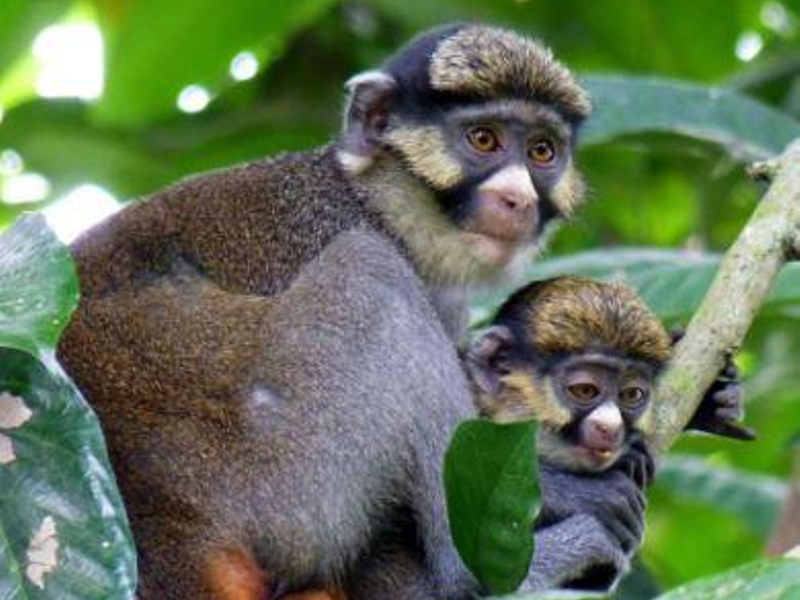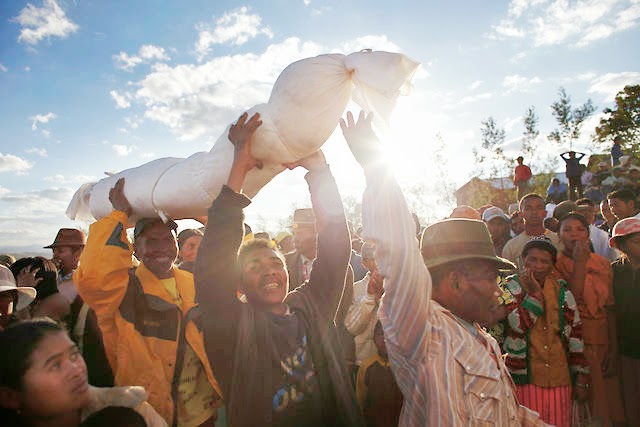Image Source: The Rufford Foundation
Enwe Lagwa, African monkeys with white faces and blue eyes, inhabit the southeastern region of Nigeria, specifically in the community of Lagwa in the Aboh Mbaise Local Government Area of Imo State. “Enwe” is an Igbo word that translates to monkey. Lagwa is the community where these unique primates have thrived for over 300 years.
Monkeys and other wild animals are hunted in Nigeria and other African countries. However, this is different in the Lagwa community, where monkeys have been respected and preserved since they first settled there more than 300 years ago. Traditional rulers of this community emphasize that it is an abomination for one to harm, kill, or eat the monkeys, and this cultural and standard practice has garnered international attention, thereby putting the Lagwa community on the world map. The community is recognized for providing safety and comfort for these monkeys.
Long before humans settled in the community known today as Lagwa, monkeys had established their existence there. According to traditional rulers of Lagwa, they had a forefather (Agwa), the very first man who lived in Lagwa with his wife over 300 years ago. Agwa was a skilled hunter and farmer. On one occasion, when his wife was heavily pregnant, he went to the farm. When he returned, his wife told him how the monkeys saved her from terrible hunger by jumping from one tree to another and dropping different fruits for her, as no one was in sight to help her get food. Agwa was thrilled to hear this, and he pronounced that nobody in the community should harm or kill the monkeys and that if they are capable of supplying fruits to a hungry person, then they share similarities with ordinary humans and, as a result, should be treated with care and not subjected to harm or killing. From that day, the monkeys began living comfortably with the Lagwa people and have not gotten hurt, killed, or eaten. They are found in bushes, farms, gardens, and around residential areas in the community. If, for any reason, someone kills the monkey, tradition demands that the killer bury the animal the way human beings bury their own dead.

Image Source: Researchgate
The monkeys in Lagwa are considered a unique and scarce breed. They are not found in any other country in the African, European, Asian, or American continent. Lynn R. Baker, a scholar at the MacArthur Interdisciplinary Program on Global Change, Sustainability, and Justice at the University of Minnesota, U.S.A. in her publication titled, ENWE LAGWA: THE MONKEYS OF LAGWA, which captures her study of the Lagwa monkey wrote, “The monkey that lives in Lagwa is called the Sclaters, or the “Nigerian” monkey (the scientific name is Cercopithecus sclateri). This monkey is found only in Nigeria and no other country.”
Lagwa monkeys have an interesting behavior that sets them apart from other animals: they bury their dead. Whenever any of the monkeys die, they come together to mourn, dig a hole with their fingers, and bury their dead. A few theories explaining this habit is that they are trying to protect their dead from being eaten by other animals or predators. Another is that they are simply following their instincts.
Legend has it that these monkeys possess the ability to always find their way to the home of a Lagwa indigen whenever they are outside Lagwa community. Suppose they cross borders to other communities or towns and are exposed to danger or threatened by the villagers; they can locate the home of any Lagwa indigen in that vicinity to seek safety or find their way back to Lagwa.
However, recent developmental activities in the community have continued to threaten the existence of these unique creatures. These monkeys that moved around freely within the village are gradually withdrawing because their natural ecosystem is being tampered with.

Victoria Ezechukwu-Nwagwu is a dynamic communications professional and the Executive Assistant to the Publisher of FunTimes Magazine. she brings a strong foundation in media, strategic communication, and organizational leadership.
Victoria is passionate about continuous learning and driving creative innovations that enhance engagement and impact. Her dedication to excellence and keen eye for detail make her an invaluable asset in fostering collaboration and executing high-level initiatives.





